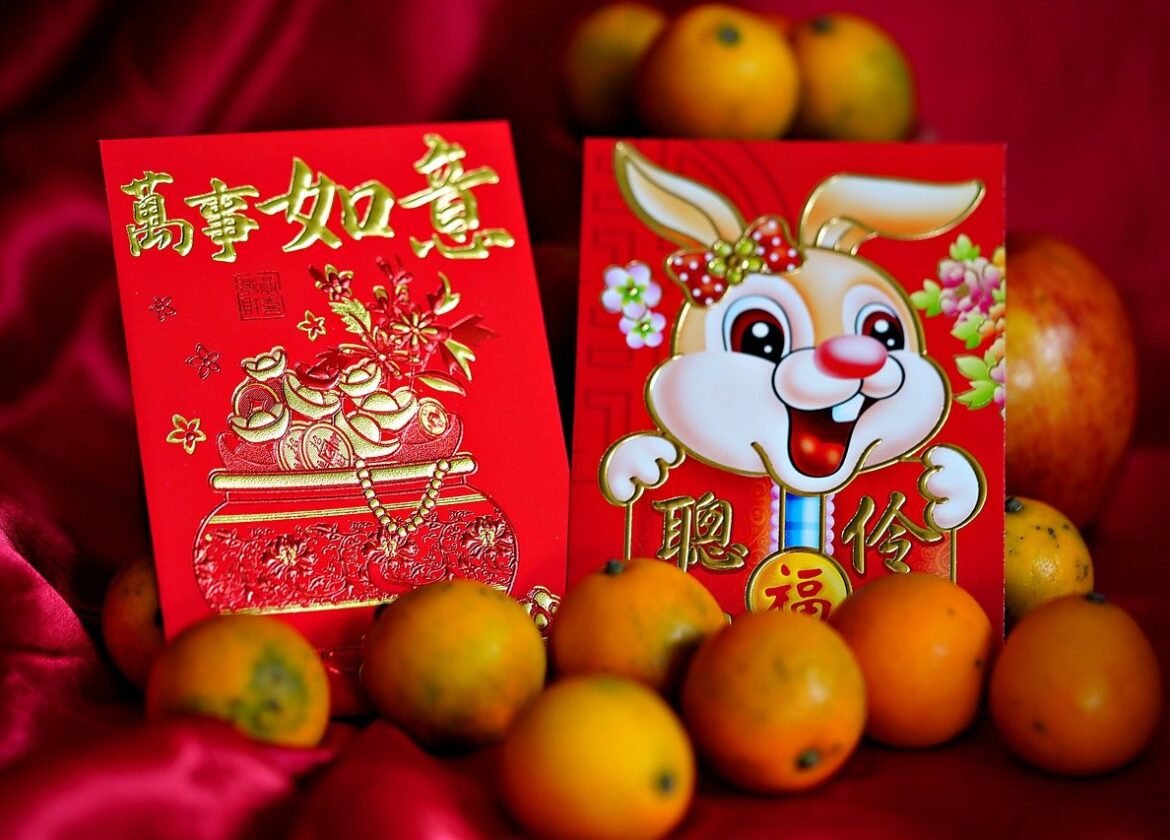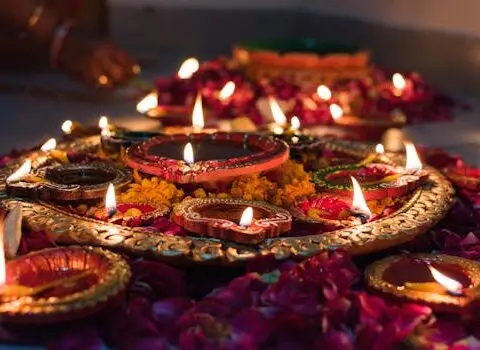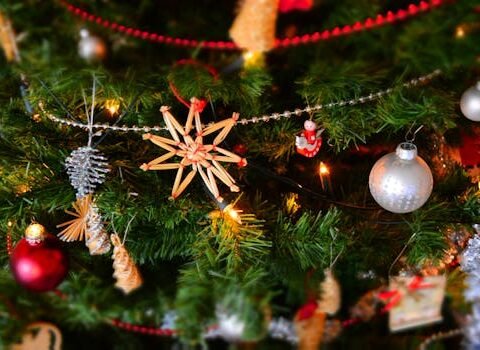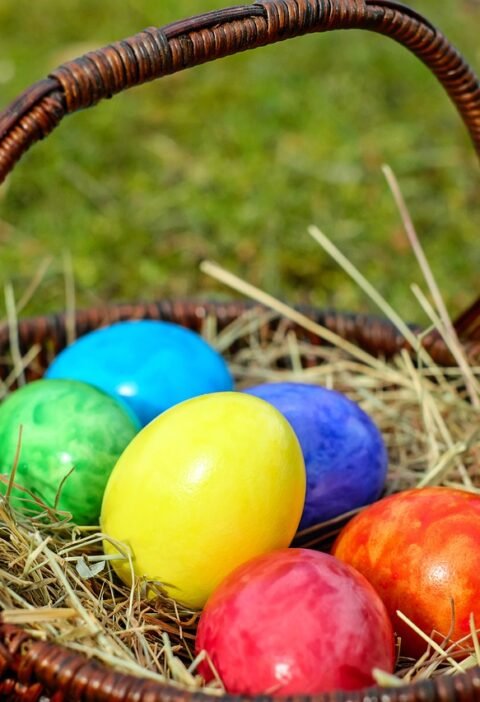Chinese New Year, also known as the Spring Festival ( Chūn Jié ), is one of the most important and spectacular holidays on the Asian calendar. This event, rich in traditions and symbols, brings together millions of families around the world. Let's discover together its origins, festivities, culinary specialties and variations of celebration in other countries.
1- What is Chinese New Year and when is it celebrated?
Chinese New Year, based on the lunar calendar, marks the start of a new year according to Chinese tradition. Unlike the Gregorian New Year celebrated on January 1, its date varies each year, falling between January 21 and February 20. In 2025, for example, it will be celebrated on January 29 .
This festival, more than 4,000 years old, is deeply rooted in Chinese legends and culture. According to mythology, the monster Nián terrorized villages every new year, but residents discovered that he feared the color red, fireworks and noise. These elements are omnipresent today in celebrations to repel evil spirits and attract good luck.
Festivities and events
Family is the heart of the celebration
Family reunion is the most important aspect of Chinese New Year. Family members, often dispersed, come together to share warm moments.
New Year's Eve Meal (年夜饭, Nián Yè Fàn)
- This is the central event of the festival, where a great feast is prepared.
- The dishes served, such as dumplings, whole fish or longevity noodles, all have symbolic meaning.
- Generations gather around the table, strengthening family bonds.
Exchange of gifts and red envelopes (红包, Hóngbāo)
- The elders give red envelopes filled with money to the younger ones to wish them luck and prosperity.
- These gifts come with heartfelt wishes for a happy new year.
2- Culinary specialties
Gastronomy plays a central role in Chinese New Year festivities. Each dish is carefully chosen for its symbolism and connection to wishes for prosperity, happiness and longevity. Here are the most popular dishes for this holiday:
1- Pork dumplings (Jiǎozi)
- Symbol : Wealth and prosperity.
These ravioli shaped like gold bars symbolize wealth and prosperity. They are often prepared as a family, strengthening bonds between generations.
2. Longevity noodles (Chángshòu Miàn)
- Symbol : Longevity and happiness.
These long, uncut noodles symbolize a long and happy life. Their tasting requires delicacy, because breaking a noodle would bring bad luck.
3. Whole steamed fish (Zhēng Yú)
- Symbol : Abundance.
The word “fish” (鱼, Yú ) is a homonym for “excess” or “abundance”. A whole fish is served to ensure a year full of opportunities and success.
4. Sweet dumplings with black sesame (Tāng Yuán)
- Symbol : Family reunion.
- Glutinous rice balls stuffed with sweet black sesame, served in a light broth.
5. Roasted or steamed whole chicken (Quán Jī)
- Symbol : Harmony and family union.
- The chicken is served whole, with head and legs, marinated with Chinese spices, steamed or roasted, then brushed with sesame oil.
6. Glutinous rice cake (Niángāo)
- Symbol : Elevation and success.
This dessert represents elevation and success, as its name means “high year” (年高).
7. Sautéed shrimp (Xiā)
- Symbol : Happiness and laughter.
- Quick and easy recipe for sautéed shrimp with garlic, ginger and chili pepper.
8. Spring rolls (Chūn Juǎn)
- Symbol : Wealth and prosperity.
These rolls, prepared with rice leaves (instead of classic dough) evoke gold ingots and symbolize wealth.
9. Hot Pot or Chinese fondue (Huǒ Guō)
- Symbol : Unity and sharing.
- A Chinese fondue prepared with a spicy and light broth in which a variety of fresh ingredients such as tofu, vegetables, shrimp and fine meats are cooked.

Why are these dishes so symbolic?
The Chinese language is full of homonyms, and many dishes are chosen for their pronunciation evoking wishes for happiness, luck or wealth. In addition, these dishes are often prepared as a family, promoting unity and sharing.
Find all the Chinese recipes
3- What are the variations of Chinese New Year celebrations?
Although deeply rooted in China, Chinese New Year is also celebrated in many countries in Asia and beyond, often with local variations in traditions and cuisine.
1. Hong Kong and Taiwan
The celebrations are very similar to those in mainland China, with particular importance given to fireworks, lion dances and flower markets. In Taiwan, temples offer special rituals to bless the new year.
2. Singapore and Malaysia
These countries hold spectacular festivities with colorful parades, such as the famous Chingay Parade in Singapore. Lo Hei , a raw fish and vegetable salad, is a unique tradition in these regions to symbolize collective prosperity.


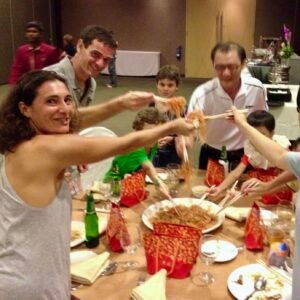
3. Vietnam (Tet)
The Vietnamese New Year, called Tet , is heavily influenced by the Chinese New Year, but with local specialties like Bánh chưng (stuffed glutinous rice cake).
4. Korea (Seollal)
In Korea, families also celebrate the Lunar New Year with dishes like Tteokguk (rice cake soup) to symbolize growth and age.
5. In the West
In cities like London, New York or Paris, Chinatowns come to life with parades, dragon shows, and special menus in restaurants. Local adaptations often include influences from local gastronomy.
4- The habits, customs and festivities of the Chinese New Year
Exchange of gifts and red envelopes (红包, Hóngbāo)
- The elders give red envelopes filled with money to the younger ones to wish them luck and prosperity.
- These gifts come with heartfelt wishes for a happy new year.
Lion and dragon dances
- These spectacular dances, accompanied by drums, cymbals and gongs, are highlights of the celebrations.
- The lion and the dragon symbolize luck, strength and wisdom, and their dances serve to drive away evil spirits.
Fireworks and firecrackers
- Fireworks light up the sky on New Year's Eve. Firecrackers, on the other hand, are used to ward off the legendary evil spirit Nián .
- This festive noise also symbolizes a vibrant and joyful new beginning.
New Year's parades and markets
- Big cities organize colorful parades, where locals and visitors mingle to celebrate.
- New Year's markets are full of decorations, flowers and culinary specialties linked to the holiday.
Cleaning and decoration
- Before the New Year, houses are carefully cleaned to drive away bad luck from the previous year.
- Red decorations, such as lanterns, streamers and Chinese characters for luck ( fu , 福), are hung everywhere.
Exchange of tangerines or oranges: an act of goodwill
- During visits from family or friends, it is common to offer tangerines or oranges as gifts. This gesture is a mark of respect and wish for happiness for the recipient.
- Tangerines are often exchanged in pairs because the number two symbolizes luck in Chinese.
Conclusion: Chinese New Year is much more than a celebration; it is a celebration of family, culture and ancestral traditions. With its culinary specialties rich in symbolism and its variations around the world, it sends a universal message of hope and prosperity for the year to come: Gong Xi Fa Cai!

